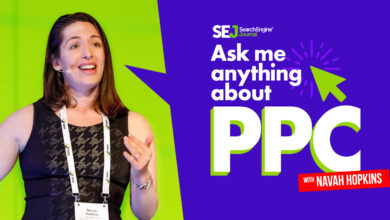A Guide To LinkedIn Single Image Ad Retargeting

LinkedIn has pleasantly surprised its users by steadily rolling out new features in recent years.
In April 2022, they publicly released the ability to build retargeting audiences based on individuals who engage with individual display ads.
This targeting option goes into the video view ranks and form redirection as another way to reach visitors who have interacted with ads.
Currently, these audiences are created based on the campaign level, including individuals who meet the targeting criteria within the campaign(s) you’ve selected to be part of the audience.
Note that you can use either standalone individual display ads or sponsored content based on existing posts you’ve promoted.
There are two options for expanding or narrowing your audience.
You can choose to include all people who interact with ads in any way (including reactions, comments, shares, and clicks) or you can strictly limit audience building to uploaded clicks.
These will only include individuals who take the intended click action that your campaign settings bill, such as clicking on a landing page, opening a lead form, or watching a video.
You can also set an engagement time frame to include people in your audience.
Options include 30, 60, 90, 180 and 365 days.
You’ll likely want to consider the potential size of the target audience from the original campaign and the length of the sales cycle when deciding which term to choose.
You can also build audiences of different lengths to order different future retargeting messages based on the duration of their initial interaction with your ad.
Benefits of engagement-based retargeting
You’ve likely heard acronyms from the progress toward a cookie-free web – for example, GDPR, CCPA, and ITP.
Remember FLoC?
Pixel-based retargeting of audiences continues to become less reliable as mobile operating system and browser restrictions reduce the ability to track users.
On the flip side, first-party platform data is becoming more valuable.
By expanding engagement retargeting opportunities within the platform, LinkedIn immediately offers a way to build audiences of individuals who might not otherwise enter pixel-based retargeting.
Additionally, paid search is becoming more audience-focused, with reduced match types and increased machine learning, and less focused on targeting very specific keywords.
The value of supplementing research with paid social networks increases to ensure that you reach your target audience through multiple channels.
LinkedIn allows you to reach these individuals front and center with micro-targeting when identifying keywords can sometimes be difficult for niche industries.
By strictly limiting audiences to people who interacted with ads, you can sculpt audiences for those who meet your targeting criteria.
For example, if your initial campaign settings limit targeting to people who work for a list of companies, you know that the narrow audience for those who click on your ads should only include employees of those companies.
Effectively, you’ve now created a list of people associated with your main target accounts who are also interested in your content based on their behavior.
You can also either expand an audience by including multiple campaigns or stick to segmenting different audiences by individual campaigns, depending on how you want to set up retargeting in the future.
Full Path Campaign Policy
LinkedIn’s price has long made it a complicated channel to justify the cost of brand awareness ads.
However, building post-engagement audiences allows for more strategic, top-following ads to attract users who are interested in your brand and redirect them with more offer-focused messaging.
For example, a top funnel campaign could contain sponsored content that links users to blog articles related to your industry.
You can build audiences of people who engage with those posts and then retarget lead ads that offer buyer proof in exchange for their contact information.
Since you’ve already preheated them with raw content, in theory you could pre-select individuals who have expressed some level of interest in your products.
At a minimum, even if you don’t have immediate plans to build a future campaign, set up a target audience any time you set up a single display ad campaign.
You will then have the public ready to go if you want to use it in the future.
Public exceptions
Using engagement audiences directly for targeting can also be useful for exclusions.
If you want to avoid saturating users with your ads, you can exclude people from your campaign as soon as they participate.
Especially when brand awareness/play top funnel is on, you can make sure they don’t keep seeing the same post after they react or click on it.
Additionally, if you’re converting people to a mid-funnel display campaign like an asset, you can avoid crossing wires by continuing to show them higher funnel content and focusing on keeping customer-focused messages in their feed.
Exclude ad participants in the original campaign while targeting them in the soldier campaign.
Start targeting!
Now that you’re familiar with the ability to create a single display ad that retargets audiences on LinkedIn, start thinking about ways to implement it into your ad account.
You probably already have blog content available that you can promote via sponsored content ads to start building audiences.
Think about the character you want to be; You may want to put up a network wide enough to allow for cost efficiencies, knowing that you can narrow it down to individuals who show a direct interest.
Create your audiences, let them start building, and start redirecting them to take additional action.
I’m excited about this feature and look forward to seeing what LinkedIn rolls out to advertisers over time.
More resources:
- LinkedIn updates include improvements to search results
- 7 ways to segment your audience for successful retargeting
- Social Media Marketing: A Complete Strategy Guide
Featured image: Abel Justin/Shutterstock




